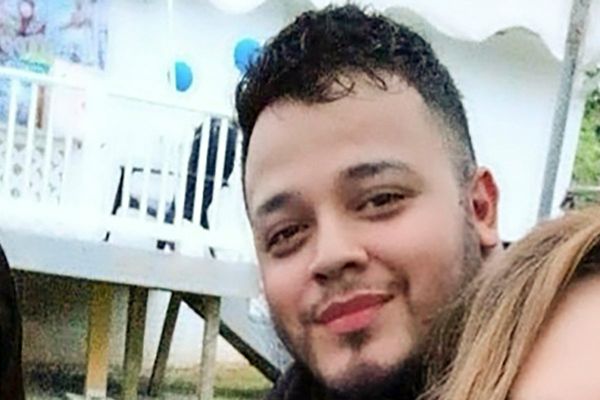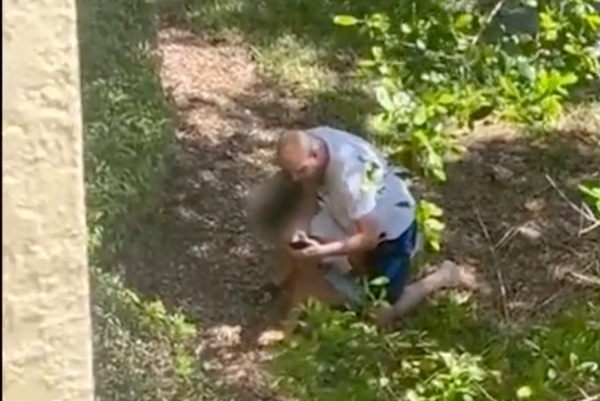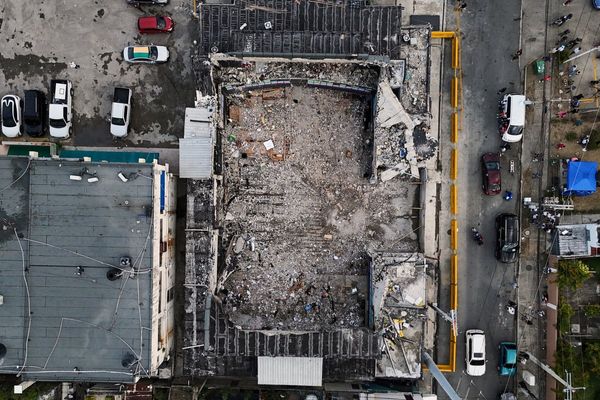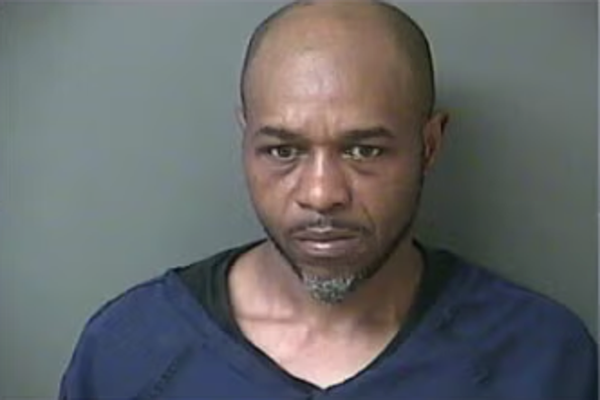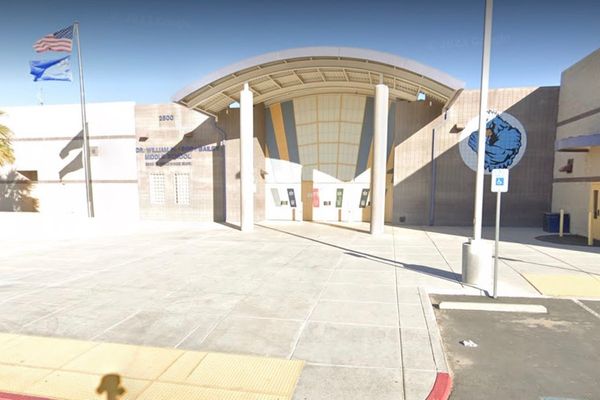
Eight months after opening, New South Wales’s largest cultural construction investment since the Sydney Opera House remains nameless, with political intervention and conflicting advice over language behind the deadlock.
The $344m addition to the Art Gallery of NSW remains colloquially known as Sydney Modern, the name of the Sanaa-designed construction project which began in 2015.
But the impasse over an official name remains, after political intervention from the former NSW government and disquiet within the museum’s own staff and Indigenous advisory group, according to documents obtained through NSW’s Government Information Public Access (Gipa) Act.
Just six weeks out from the new building’s opening in December 2022, the AGNSW’s board of trustees – responsible for endorsing Indigenous names for the new Sydney Modern building and the 151-year-old sandstone landmark to its south – called time on the naming process. And it appears little progress has been made since.
On 11 October 2022 the museum sent a brief to Ben Franklin, the arts minister in the previous Coalition government, explaining why the building would be opened on 3 December without a name.
“It became apparent that there was increasing discomfort amongst art gallery Indigenous staff, the art gallery’s Indigenous advisory group and community leaders whom the art gallery has long, productive and established relationships,” the brief said.

Eight days later the museum’s Indigenous advisory group met. The meeting’s minutes noted that plans to give the AGNSW’s two buildings – the old and the new – Indigenous names had been temporarily scuttled due to “broader external political factors”.
Negotiations then began over how politicians could deal with the unprecedented situation of cutting the ribbon on a $344m project without an official name.
Politics descends
In 2021 the museum convened a naming consultation group, including Prof Jakelin Troy, a Sydney Indigenous language academic; Stephen Gilchrist, a Yamatji lecturer in Indigenous art at the University of Sydney; Tony Albert, an award-winning Indigenous artist; and a number of Indigenous Sydney elders. First Nations museum staff and the Metropolitan Local Aboriginal Land Council were also invited to contribute.
In May 2022, the chair of the museum’s board of trustees, David Gonski, informed the arts minister that Naala Nura (seeing the land/country) was in the final stages of being approved by the board for the old building and Naala Badu (seeing the water/s) for the new. The names were sourced from the Dharug language.
But the next month, the NSW government instructed the museum to broaden its consultation to include its own government agency, the Aboriginal Languages Trust.
Franklin told Guardian Australia he suggested the AGNSW include the trust “so as to ensure that any new name announced would be supported by the broader Aboriginal community”.
“The method, process and management of all consultation was conducted at the discretion of AGNSW,” Franklin said in the statement.
But the museum told Guardian Australia Franklin requested the Gujaga Foundation, which represents the La Perouse Indigenous community, be brought on board for consultation. The chair of that foundation, Raymond Ingrey, also sits on the board of the Aboriginal Languages Trust.
Meetings with members of the Gujaga Foundation took place in July and August 2022.

But the the chief executive of the Metropolitan Local Aboriginal Land Council, Nathan Moran, said he had not heard about Gujaga’s involvement in the naming project until Guardian Australia called him.
Moran said the government and the museum had taken a serious misstep in protocol.
“We are the legislated representative body to preserve and protect cultural heritage, we are the representative body of all Aboriginal people on the land where the art gallery is based and operates.
“They’ve invited someone else into our back yard. It’s just not on.”
Under the Gujaga Foundation’s advice, names in the Dharawal language were put forward to the board of trustees.
The foundation told Guardian Australia its advice was sound because the Dharawal language was spoken by the clans, including the Gadigal clan, who continued to live in traditional camps around Sydney Harbour and Botany Bay, as well as in the Illawarra and Shoalhaven region, in the decades after colonisation.
In 1883 (11 years after the gallery was founded), government intervention caused the Aboriginal people living in the Sydney Harbour and Botany Bay camps to be moved to La Perouse to be “out of sight and out of mind” from the colony.
“As is the case with the vast majority of the La Perouse Aboriginal community, each member, director and employee of the Gujaga Foundation belongs to families with an ancient and unbroken connection to coastal Sydney … the land on which the Art Gallery of NSW is situated,” the foundation’s chair said in a statement.
The AGNSW told Guardian Australia the addition of alternative names in Dharawal “did not denote the art gallery’s disendorsement of that proposed by the naming consultation group, but rather the introduction of a further option”.
Nevertheless, in early September, Gonski wrote to the minister seeking approval of the board’s decision to go with the Dharawal words Nandhi Ngura (seeing country) and Nandhi Gadhu (seeing [salt] waters) as the Indigenous names for the old and new buildings respectively.
The next day the AGNSW’s director, Michael Brand, informed the museum’s Indigenous advisory group that the government had decided to postpone the announcement of the new names.
Language barriers
The decision to go with Dharawal names appears to contradict the widely held view of other sources, including the Australian Museum and the City of Sydney, which, in consultation with Troy and First Nations groups, accepts Gadigal and/or Dharug as the languages spoken on the land where the Sydney CBD now stands.
Art curator Hetti Perkins, the AGNSW’s former head of Aboriginal and Torres Strait Islander art for 13 years, emailed Brand complaining that in the intellectual property agreement signed between the museum and Gujaga, acknowledgement of the new naming did not contain a single reference to the Gadigal clan.
Moran told Guardian Australia it showed “a total lack of cultural protocol [on the part of Gujaga], and a total disrespect of the local people and the local language by the museum”.
“To bring in languages from other areas is so profound, people are deeply offended quite frankly,” he said.
A spokesperson for the Gujaga Foundation, Ash Walker, said the confusion was understandable, “which is largely due to non-Indigenous people and Indigenous people traditionally from areas outside of coastal Sydney failing to understand our complex layers of identity”.
On 11 October, a brief was sent to the minister by Gonski withdrawing the Dharawal names, saying it was “no longer appropriate to proceed with the adoption of Sydney Aboriginal language names … at this time”.
Faced with the prospect of opening a much-publicised new building without a name, the minister’s office and the museum began negotiations on a prepared statement to explain the nameless mystery to the media and the public, the Gipa documents show.
On 3 December 2022, the project – the product of Australia’s largest ever government and philanthropic arts partnership – was opened as “the new art gallery building”.
It is still waiting for a name.
A museum statement sent to Guardian Australia said it “remains optimistic” that Indigenous names will be adopted for one or both of its buildings and consultations are continuing.
“The art gallery strongly believes that Aboriginal and Torres Strait Islander peoples have the right to self-determination in their cultural affairs and expression of cultural matters,” it said.
